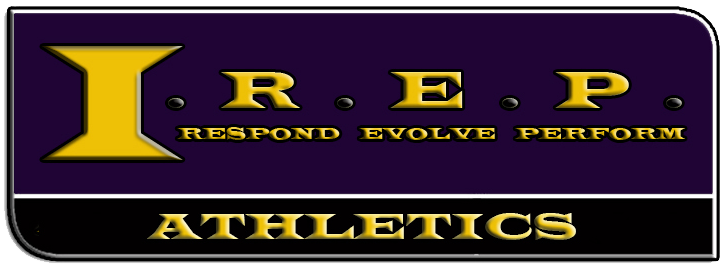The Sprint Triathlon is recognized as the entry point for many into the world of triathlon. This distance comprises a 0.5-mile (750 meters) swim, a 12.4-mile (20 kilometers) bike ride, and finishes with a 3.1-mile (5 kilometers) run. Given its relatively shorter distance, the sprint triathlon is ideal for newcomers to the sport. It offers a manageable challenge that requires a sensible amount of training, making it an excellent choice for those with limited time or for athletes transitioning from single-discipline sports.
The Olympic Triathlon, also known as the Standard distance, consists of a 0.93-mile (1.5 kilometers) swim, a 24.8-mile (40 kilometers) bike, and a 6.2-mile (10 kilometers) run. This distance requires a greater commitment to training and preparation due to the increased physical demand. Athletes considering the Olympic Triathlon should have a good foundation in endurance sports or have previously completed a sprint triathlon. This distance serves as a significant stepping stone towards longer, more challenging triathlon formats.
The Half Ironman, commonly referred to by its distance as 70.3 (representing the total mileage covered), presents a formidable challenge that includes a 1.2-mile (1.9 kilometers) swim, a 56-mile (90 kilometers) bike, and culminates in a 13.1-mile (21.1 kilometers) run. This middle-distance event tests an athlete’s endurance and resilience, requiring a solid training background and a considerable investment of time for preparation. Opting for a Half Ironman distance is a decision that should come after gaining experience in shorter triathlon events or for those with an extensive background in endurance sports.
Ironman is an awe-inspiring test of physical and mental endurance that encompasses a 2.4-mile (3.8 kilometers) swim, a 112-mile (180 kilometers) bike, and a full marathon run of 26.2 miles (42.2 kilometers). Completing an Ironman is a lofty goal that demands an extraordinary level of dedication to training, often spanning many months. Athletes aspiring to tackle this distance must possess a deep commitment to the psychological perseverance required to complete such a demanding event.
Goal Setting
Goals should stretch your abilities but remain within the realm of attainability. Setting an unrealistic goal, such as completing an Ironman with only a few months of training, is likely to lead to disappointment and can diminish your motivation. Assess your current fitness level, available training time, and other commitments when setting your goals.
Incorporating both short-term and long-term goals can provide structure to your training regimen. Long-term goals give you a final destination to strive towards, such as completing a specific triathlon distance. Short-term goals act as main stages, such as improving your swimming technique or increasing your cycling endurance over several weeks. These incremental achievements can boost confidence and motivation as you progress toward your ultimate objective.
Training for a triathlon is a dynamic process, and you may encounter unforeseen challenges along the way, such as injuries or changes in personal circumstances. Be prepared to reassess and adjust your goals as necessary. This adaptability can help maintain momentum and ensure that goals remain relevant and achievable.
To effectively gauge your advancement towards your goals, establish criteria for measuring progress. This could include timed trials, distance milestones, or specific workout achievements. Regularly assessing your performance against these criteria can provide insight into your development and highlight areas that may require extra focus.
Documenting your goals can significantly enhance your commitment to achieving them. Write them down and place them somewhere visible as a constant reminder of what you’re working toward. This act of recording also allows for easier review and adjustment of goals as your training evolves.
Training Time and Lifestyle Consideration
 Once you have a clear understanding of your available time, the next step is to devise a balanced training schedule. This schedule should be tailored to ensure that your training does not unduly infringe upon other aspects of your life. Intersperse more demanding sessions with lighter workouts and rest days to mitigate the risk of fatigue and overtraining, which can lead to burnout and negatively impact both your athletic and personal life.
Once you have a clear understanding of your available time, the next step is to devise a balanced training schedule. This schedule should be tailored to ensure that your training does not unduly infringe upon other aspects of your life. Intersperse more demanding sessions with lighter workouts and rest days to mitigate the risk of fatigue and overtraining, which can lead to burnout and negatively impact both your athletic and personal life.
Flexibility within your training regimen is important for accommodating unforeseen circumstances and adapting to the ebb and flow of daily life. Implementing a degree of flexibility in your schedule allows for the adjustment of workouts in response to work pressures, family commitments, or unexpected events. This adaptive approach helps maintain consistency in training while minimizing stress and guilt associated with missed sessions.
Prioritizing workouts and employing efficient time-management strategies can optimize training effectiveness within limited timeframes. Combining workout types, such as brick sessions (back-to-back disciplines training) or utilizing lunch hours for shorter sessions, can enhance training efficiency. Incorporating family or social activities into your training, like bike rides or runs with friends or family, can help balance personal relationships and fitness goals.
Geography and Environment
The location of a triathlon affects several logistical aspects of participation, including travel, accommodation, and familiarity with the venue. Local events offer the convenience of minimal travel and the advantage of training in conditions similar to those on race day. Destination triathlons, while potentially offering unique and memorable experiences, require more extensive planning concerning travel and acclimatization to different time zones, altitudes, or climates.
Environmental conditions such as temperature, humidity, altitude, and water conditions are important in triathlon performance and safety. High temperatures and humidity can significantly increase the risk of heat-related illnesses, necessitating acclimatization and strategic hydration plans. Races at high altitudes may affect oxygen availability, impacting endurance and requiring a period of acclimation to prevent altitude sickness.
Cold water temperatures may require the use of wetsuits, while rough sea conditions could demand proficiency in open-water swimming. Selecting a triathlon means considering these environmental factors and preparing accordingly through training and equipment choices.
For races in warmer climates, acclimatizing to heat through training in similar conditions or utilizing heat adaptation strategies can be beneficial. Preparing for a race in colder conditions or at altitude might involve specific physiological and equipment adjustments. Tailoring your training to match the expected conditions of your chosen event can enhance performance and enjoyment while minimizing health risks.
Informed decision-making regarding event selection requires thorough research into the geographic and environmental characteristics of potential races. This research should extend to historical weather conditions on race day, water temperatures, and the race course’s topography. Armed with this information, athletes can make educated choices about the suitability of an event relative to their preferences, training conditions, and performance goals.
